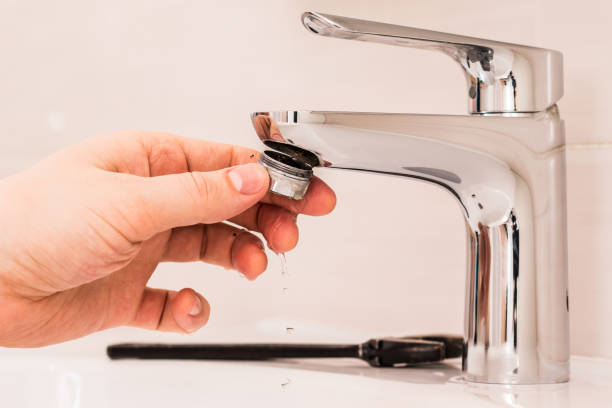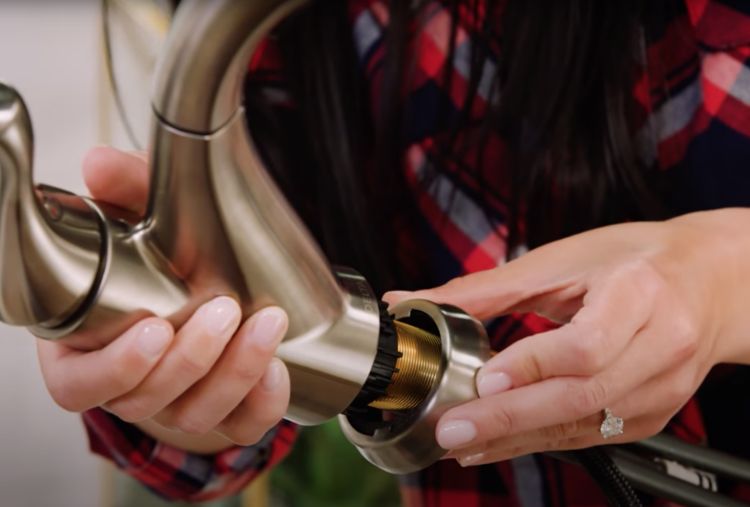Exploring the Importance of Correcting a Broken Faucet
Exploring the Importance of Correcting a Broken Faucet
Blog Article
How do you really feel about Should I Repair or Replace a Leaky Faucet??

Trickling faucets may feel like a minor trouble, yet their impact exceeds simply the annoyance of the audio. From wasting water to incurring unnecessary economic prices and health risks, disregarding a trickling tap can bring about various consequences. In this short article, we'll look into why it's critical to resolve this usual household issue promptly and effectively.
Wastage of Water
Ecological Influence
Trickling taps contribute substantially to water waste. According to the Environmental Protection Agency (EPA), a single tap trickling at one drip per second can squander more than 3,000 gallons of water each year. This not only strains water sources however likewise affects ecosystems and wildlife depending on them.
Financial Expenses
Increased Water Expenses
Beyond the ecological impact, trickling faucets can blow up water expenses considerably. The built up wastefulness in time equates right into higher energy expenditures, which might have been stayed clear of with timely repair services.
Prospective Residential Or Commercial Property Damage
In addition, extended trickling can cause damage to fixtures and surface areas bordering the tap. Water buildup can create discoloration, rust, and even architectural concerns if left ignored, leading to additional repair costs.
Wellness Worries
Mold and Mold Growth
The constant existence of moisture from a trickling faucet develops an excellent atmosphere for mold and mildew and mildew growth. These fungis not only jeopardize indoor air high quality yet likewise posture health dangers, specifically for individuals with breathing problems or allergic reactions.
Waterborne Diseases
Stagnant water in leaking taps can come to be a breeding ground for germs and various other virus, raising the risk of waterborne diseases. Contaminants such as Legionella germs flourish in stationary water, possibly leading to serious illnesses when consumed or inhaled.
Do it yourself vs. Specialist Repair work
Advantages and disadvantages of Do It Yourself Repair
While some might try to fix a leaking tap themselves, do it yourself repair work include their own collection of obstacles. Without correct knowledge and tools, DIY efforts can aggravate the concern or lead to incomplete repair work, extending the issue.
Benefits of Hiring a Professional Plumber
Working with a professional plumber makes sure that the underlying reason for the leaking tap is attended to efficiently. Plumbings have the competence and equipment to diagnose and repair faucet problems successfully, conserving time and reducing the danger of additional damages.
Step-by-Step Overview to Dealing With a Dripping Faucet
Tools Required
Before attempting to repair a trickling tap, collect the essential devices, consisting of a flexible wrench, screwdrivers, substitute parts (such as washers or cartridges), and plumber's tape.
Common Faucet Issues and Their Solutions
Recognize the sort of tap and the certain problem triggering the drip. Typical problems consist of damaged washers, rusty shutoff seats, or defective O-rings. Refer to supplier directions or online tutorials for detailed advice on repair services.
Preventive Measures
Normal Maintenance Tips
To stop leaking faucets, perform routine maintenance such as cleaning up aerators, checking for leakages, and changing damaged components without delay. Additionally, consider installing water-saving tools or updating to extra reliable components.
Value of Prompt Fixes
Attending to leaking faucets as soon as they're noticed prevents more water waste and prospective damage, inevitably saving both water and money in the future.
Effect On Building Value
Perception of Well-Maintained Building
Preserving a home in good condition, including attending to maintenance concerns like dripping taps, enhances its viewed worth and value amongst potential buyers or occupants.
Impact on Resale Value
Qualities with properly maintained plumbing components, including faucets, command greater resale worths in the real estate market. Dealing with leaking taps can contribute to a favorable impact throughout residential or commercial property assessments and arrangements.
Environmental Obligation
Individual Contribution to Conservation
Taking responsibility for fixing dripping faucets aligns with broader initiatives toward water conservation and environmental sustainability. Every person's activities jointly make a substantial influence on maintaining priceless sources.
Lasting Living Practices
By prioritizing prompt repairs and taking on water-saving routines, individuals add to sustainable living techniques that benefit both present and future generations.
Verdict
Resolving a leaking faucet exceeds mere comfort; it's an important action toward preserving water, decreasing economic costs, and guarding health and home. Whether via do it yourself repairs or expert help, taking action to repair trickling faucets is a tiny yet impactful way to promote accountable stewardship of sources and add to a healthier, more lasting future.
Why Are My Faucets Dripping (And Can I Fix it Myself)?
Causes of a Dripping or Leaking Faucet
Whether you’re hearing drops of water falling and hitting a sink, or noticing water ooze out from the base of the spout, you shouldn’t ignore a dripping or leaking faucet. And, the good news is, sometimes you can fix the problem yourself.
In this article, we’ll review a few common causes of dripping and leaky. We’ll also walk you through some basic ways to find the problem and handle it without calling anyone — and let you know when to call in a pro.
But, no matter what the cause, or whether you can handle it on your own, the sooner you address it, the better.
Each drip may be a tiny amount of water. But, they all add up quickly. According to the U.S. Geological Survey, one faucet losing one drop every 20 seconds — five a minute — wastes around a liter of water every day, and 173 gallons a year.
Add in more than one in your house, and it’s a lot of water to waste. So, we’ll help you get to the bottom of things quickly.
Four Reasons Your Faucet May Be Dripping
Aerator is Damaged or Unseated Valve Seat is Corroded O Ring is Loose or Worn Out Part of the Assembly is Loose Aerator is Damaged or Unseated
If you unscrew the end of your faucet, you’ll find the aerator. It’s the little stem piece with a screen on it that shuts off the water circulation.
If it’s damaged, or if it’s not sitting right, it will allow water to pass through.
Valve Seat is Corroded
Next is the valve seat, which is connected to the washer. If the washer wasn’t in place correctly, then it could have ground against the seat. Over time, this damages the valve seat.
The problem could also be corrosion: Over time, the part has worn out, and it’s now allowing water to pass through.
O Ring is Loose or Worn Out
Since the o ring is only a small rubber gasket, it’s a common reason why the faucet is dripping. You’ll find it at the base of the faucet, and it’s there to keep water from coming out where it’s not supposed to.
However, it’s common for the o ring to wear out over time. When it does, you’ll notice a drip.
Part of the Assembly is Loose
So far, we’ve looked at a few small, specific parts. But, the problem could be anywhere in the assembly if something’s out of place.
Even if a part isn’t damaged, over time, it may have become loose or dislodged. It could be the parts we mentioned, or the aerator at the tip of the faucet, the stem itself,
Can I Fix a Leaky Faucet Myself?
Depending on the problem, and how handy you are, there’s a chance you can fix a leaky faucet without calling a professional. But, you do run the risk of making the problem worse.
If it’s a small drip, you can certainly try a few troubleshooting tactics. We’ll walk you through them in a moment.
But, no matter what, your first step should be shutting off the water coming into the faucet. You should find a shutoff valve under the sink on the pipes leading to it. Turn each one clockwise until they close tightly.
Next, make sure you have the right tools for whatever you’re attempting. It’s tempting to make do with what you have. But, you need the right ones for a reason: You’re often dealing with small parts that can break if you handle them carelessly.
If you’re feeling confident, here are some places to start.
Items Near the Tip of the Faucet
A few of the parts we mentioned — particularly the valve seat and washer — are located at the tip of the faucet where the water comes out. They’re easy to access, making it a good place to start.
Check the O Ring
To check the o ring, you’ll need to take off the spout at the base. It’s easiest on kitchen sinks with long spouts, versus the smaller, bulkier base on most bathroom sinks.
Either way, this can be tricky, so do it carefully and don’t force anything. If it’s not coming right off, you’re much better off calling in a pro than possibly breaking something.
For a kitchen sink, there’s usually a nut or coupling assembly at the base of the spout. These often slide off easily without using any tools.
Once you’ve disassembled those parts, gently but forcefully twist off the spout.
Then, you can see the o rings. There should be two of the rubber gaskets on the base. If they look worn or damaged, replace them, and see if that solves the problem.

As a person who reads about Why Is It Important To Fix Your Leaking Tap/Faucet?, I figured sharing that section was a smart idea. So long as you enjoyed our post kindly consider to share it. Bless you for your time. Don't forget to stop by our site back soon.
Report this page